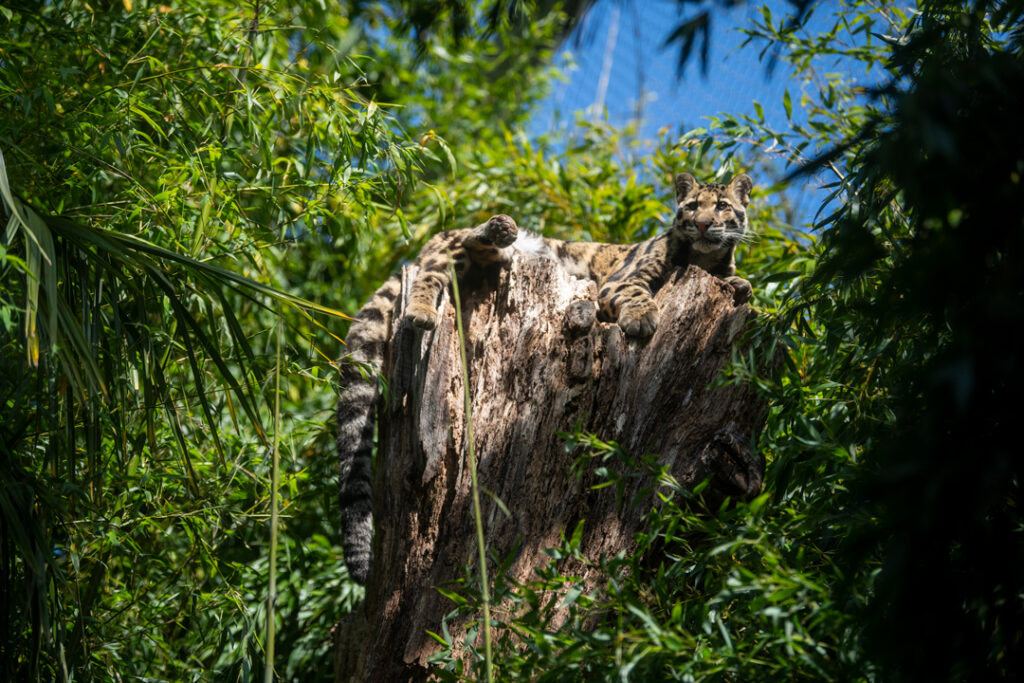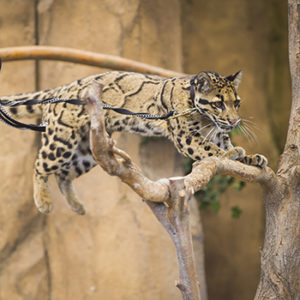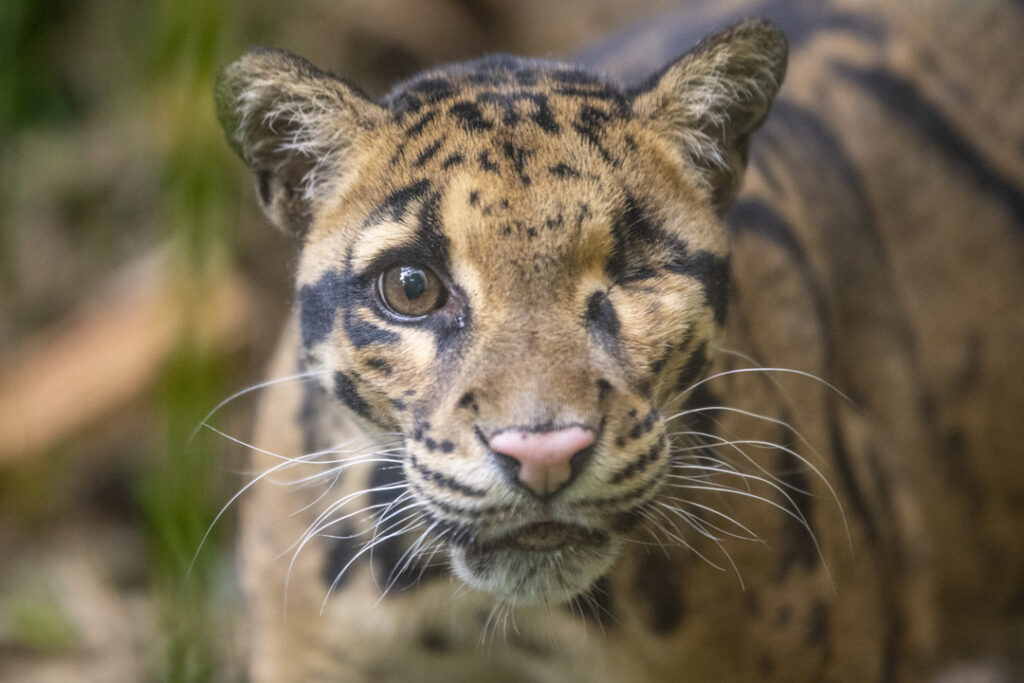Clouded leopard
Did you know?
Neofelis nebulosa
Can you spot our clouded leopards? It can be tricky – they’re shy, nocturnal and excellently camouflaged!
Here’s a tip: Try looking up. Clouded leopards are fantastic climbers.
Discover Clouded leopards
Habitat
Wild and Zoo
Clouded leopards live in tropical forests, grasslands, scrub and mangrove swamps in Nepal, Sikkim, southern China, Sumatra, Thailand and Borneo. Find them in the Asian Forest Sanctuary.
Asian Forest Sanctuary
Meet the Keepers
(they don't bite.)
Our elephant care team also look after the clouded leopards. They give a chat daily. Bring all your questions!
Zookeeper Life: Margaret
Meet our clouded leopards
Rakhan
Orchid
Banyan
Jao Ying
Sang Dao
|
Eating
(and predators!)
|
Clouded leopards are carnivores. They hunt monkeys, small deer, wild pigs, birds and rodents; also domestic calves, pigs, goats and poultry.
|
Their predators are mainly humans, hunting them for their pelts and to protect livestock; and by tigers.
|
|
Climbing trees
at six weeks.
|
In the wild, clouded leopards breed year-round. After a three-month gestation period, females give birth, usually in hollow trees, to litters of 1-5 cubs.
|
Cubs are born blind. They open their eyes after 10-12 days and by six weeks are climbing trees. They stay with their mothers for about 10 months, learning how to hunt.
|
|
Acrobats
and hunters.
|
Mostly solitary, clouded leopards hunt at night, They stalk their prey from the trees or ground and are rarely seen by people.
|
They can climb upside down, hang from branches with their hind feet and even climb down trees headfirst like a squirrel!
|
Protecting Clouded leopards
Vanishing forests.
THE THREAT: Clouded leopards are endangered. Their tropical forests are being cut down at the world’s fastest deforestation rate (around 1.2% yearly) for logging, human habitat and to grow palm oil, a common food product.
TAKE ACTION: Check products you use for sustainable palm oil, and encourage companies to make the switch. Send a letter, email or tweet, and download a Palm Oil Shopping App.
Asian forest Stories
Who's Nearby?
Visiting our clouded leopards? Then you’re super-close to our Asian elephant! Meet Suki and chat with her keepers at daily presentations.

 Orchid and Banyan are sister and brother, born here at the Zoo on May 12, 2015. They live together and get along really well. Orchid is smaller and a little shyer, says assistant curator Maureen O’Keefe, but when she walks onto the Wild Wonders stage you would never know – she’s a pro at the climbing, balancing and leaping that show off a clouded leopard’s natural wild abilities.
Orchid and Banyan are sister and brother, born here at the Zoo on May 12, 2015. They live together and get along really well. Orchid is smaller and a little shyer, says assistant curator Maureen O’Keefe, but when she walks onto the Wild Wonders stage you would never know – she’s a pro at the climbing, balancing and leaping that show off a clouded leopard’s natural wild abilities. Banyan and Orchid are brother and sister, born here at the Zoo on May 12, 2015. They live together and get along really well. Banyan is around 20 pounds heavier than his sister, and is super-talkative, says assistant curator Maureen O’Keefe.
Banyan and Orchid are brother and sister, born here at the Zoo on May 12, 2015. They live together and get along really well. Banyan is around 20 pounds heavier than his sister, and is super-talkative, says assistant curator Maureen O’Keefe.
 Sang Dao was born on March 27, 2013.
Sang Dao was born on March 27, 2013.